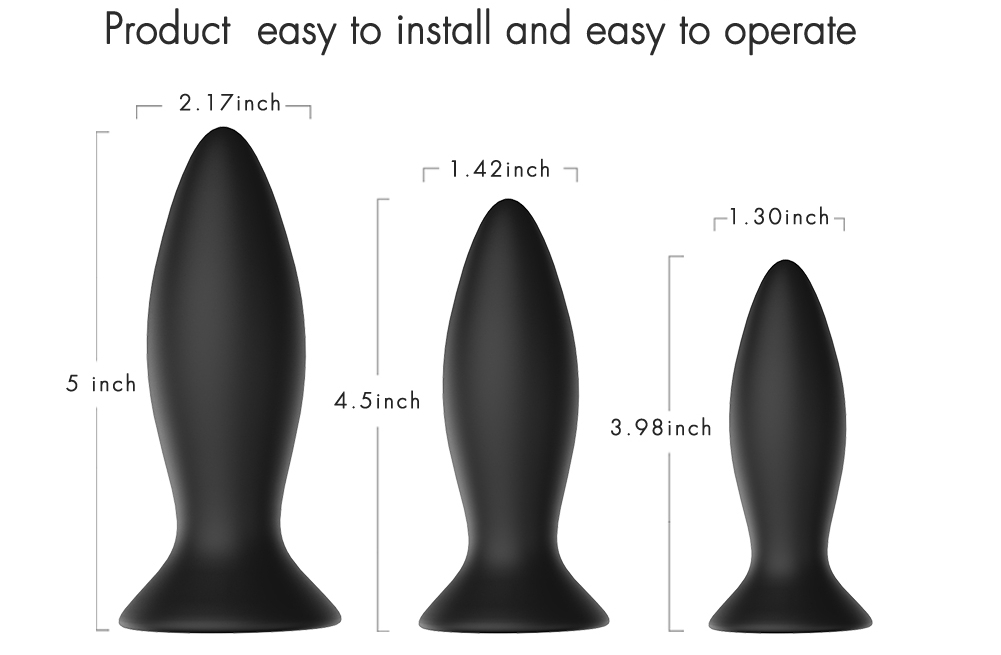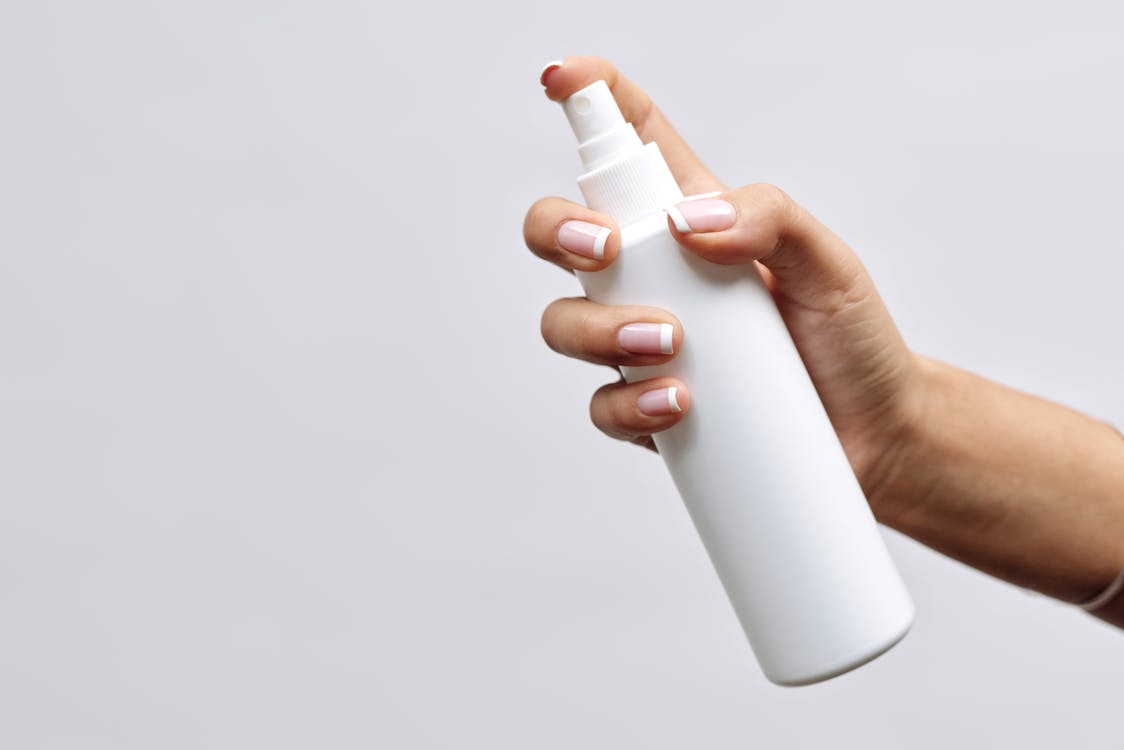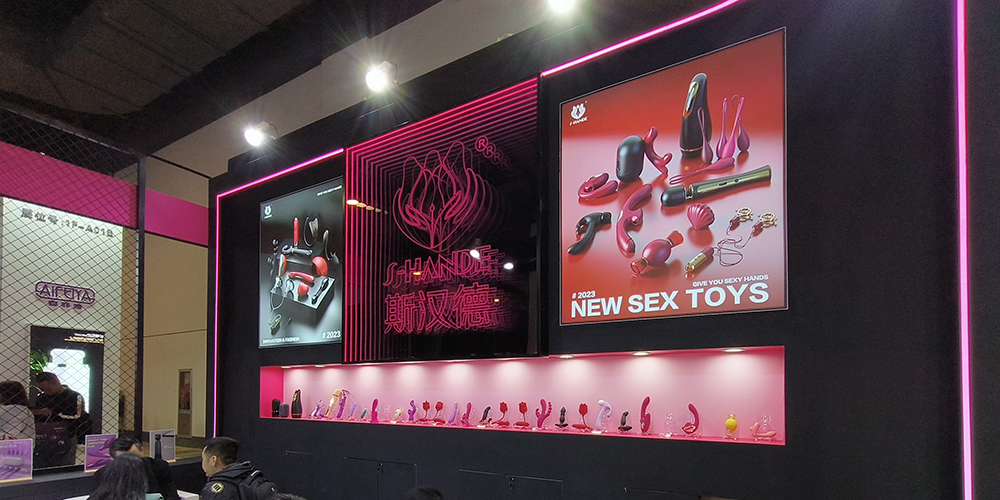Viewed:607 Date:2023-05-18
Vibrators are popular sex toys that have become increasingly mainstream over the years. While they can provide immense pleasure, it is important to prioritize vibrator safety to avoid any potential health risks or product damage. As sex toy business people, it is crucial to educate your customers on proper usage and maintenance of vibrators to ensure a safe and enjoyable experience.

Vibrator safety, including proper usage and maintenance, as well as legal and regulatory considerations. This article will also address common concerns and questions surrounding vibrator use, such as frequency of use and sharing vibrators. By educating your customers on proper vibrator usage and maintenance, you can help them enjoy their toys safely while minimizing the risk of injury or damage. Let's dive in and explore the world of vibrator safety together.
Types of Vibrators
Vibrators come in a variety of shapes, sizes, and materials, and it's important to understand the different types and their safety implications.
A. External vs. Internal Vibrators:
External vibrators are designed to stimulate the clitoris and external genitalia, while internal vibrators are designed to be inserted into the vagina or anus. For the sake of safety, it's important to note that internal vibrators should have a flared base or retrieval cord to avoid accidental insertion into the rectum or vagina too far. Customers should be advised to start with a small size and gradually work their way up to avoid injury or discomfort.

B. Battery-operated vs. Rechargeable Vibrators:
Battery-operated vibrators are powered by disposable or rechargeable batteries, while rechargeable vibrators are powered by built-in rechargeable batteries. Rechargeable vibrators are generally more environmentally friendly and cost-effective in the long run, but it's important to note that both types can malfunction and pose a risk if not handled properly. It's essential to advise customers to follow the manufacturer's instructions and replace batteries or charging cords if they show signs of damage or wear.
C. Materials Used in Vibrators and their Safety Implications:
The materials used in vibrators can impact their safety and effectiveness. Some common materials include silicone, plastic, metal, and rubber. Silicone is a popular material due to its non-porous and hypoallergenic properties, making it easy to clean and safer to use. Plastic and metal vibrators are also non-porous and easy to clean, but it's important to note that some metals may cause allergic reactions in some people. Rubber and jelly-like materials should be avoided as they are porous and can harbor bacteria, making them more difficult to sanitize and potentially unsafe to use.
Proper Usage of Vibrators
To ensure a safe and enjoyable experience, it's important to use vibrators properly. Here are some key factors to keep in mind:
A. Lubrication and the Importance of Using the Right Type:
Lubrication is essential for comfortable and safe vibrator use, especially for internal vibrators. Water-based or silicone-based lubricants are recommended, as oil-based lubricants can damage some types of vibrators. Customers should be advised to avoid using silicone-based lubricants with silicone vibrators, as they can degrade the material over time.

B. Tips for Safe Insertion:
The insertion technique is important to avoid injury or discomfort. Customers should be advised to start with a small-sized vibrator and gradually work their way up to larger sizes. They should also use gentle and slow movements when inserting the vibrator and avoid forceful thrusting. It's essential to remind customers to use only the designated body orifices for insertion and to avoid sharing vibrators between orifices.
C. Avoiding Overuse and Preventing Damage:
Overuse of vibrators can lead to discomfort, irritation, or even injury. It's important to advise customers to limit their vibrator use to a reasonable amount of time per session and to take breaks between sessions. They should also avoid using vibrators on a daily basis, as this can lead to desensitization or over-stimulation. It's important to advise customers to turn off their vibrator before removing it to avoid damage to the product or injury to themselves.
It's also important to advise customers to check their vibrators regularly for signs of wear and tear, such as cracks, fraying wires, or malfunctioning controls. Customers should be advised to replace their vibrator if it shows signs of damage or wears to ensure continued safe use.
Maintaining Vibrators
To ensure the longevity and safety of vibrators, proper maintenance is crucial. Here are some key factors to keep in mind:
A. Cleaning and Sanitization:
Regular cleaning and sanitization of vibrators is essential for preventing the spread of bacteria and infection. Customers should be advised to clean their vibrator after each use, using warm water and mild soap or a specialized toy cleaner. It's important to remind customers to avoid submerging battery-operated vibrators in water and to ensure that any charging ports or cables are properly sealed before cleaning. They should also avoid using harsh chemicals or abrasive sponges or cloths that can damage the vibrator's surface. It's recommended that customers clean their vibrator before and after sharing it with a partner to avoid the spread of sexually transmitted infections.

B. Proper Storage and Handling:
Proper storage and handling of vibrators can prevent damage and prolong their lifespan. Customers should be advised to store their vibrator in a clean and dry place, away from direct sunlight and extreme temperatures. It's important to remind customers to avoid storing vibrators with other toys or materials that can damage the surface, and to use a storage bag or container to keep it clean and protected. Customers should also avoid dropping or throwing their vibrator and should handle it with care to prevent damage to the product.
C. Regular Battery Maintenance and Replacement:
Battery-operated vibrators require regular maintenance and replacement to ensure optimal performance and safety. Customers should be advised to follow the manufacturer's instructions for battery replacement and to avoid using damaged or leaking batteries. It's important to remind customers to store batteries in a cool and dry place, away from direct sunlight and heat sources. Rechargeable vibrators require regular charging, and customers should be advised to follow the manufacturer's instructions for charging and to avoid overcharging or leaving the vibrator connected to the charging cable for too long.
It's also important to remind customers to replace their vibrator if it shows signs of wear or damage to ensure continued safe use. Sex toy business people can also offer customers information on vibrator recycling programs in their area to promote environmentally responsible disposal.
Addressing Common Concerns and Questions
As with any product, customers may have concerns or questions about the safe use of vibrators. Here are some common concerns and questions and how to address them:
A. Frequency of Vibrator Use:
Customers may wonder how often it is safe to use a vibrator. While there is no set rule, it's important to remind customers to listen to their bodies and not overdo it. Overuse can lead to desensitization and even injury. It's recommended that customers take breaks between uses and vary the intensity and duration of their vibrator sessions. Additionally, customers should be advised to avoid using vibrators as a substitute for seeking medical advice or treatment for sexual health issues.
B. Vibrator Safety During Pregnancy:
Customers may wonder if it is safe to use a vibrator during pregnancy. While there is no evidence that vibrator use is harmful to a developing fetus, customers should consult with their healthcare provider before using a vibrator during pregnancy. Customers should also be advised to use caution and avoid excessive pressure or deep insertion during vibrator use to prevent any potential harm to the developing fetus.

C. Sharing Vibrators and How to Do It Safely:
Sharing vibrators can be a fun and intimate experience, but it's important to do it safely to avoid the spread of bacteria and infection. Customers should be advised to use a condom or dental dam to prevent the spread of sexually transmitted infections. Additionally, customers should clean and sanitize the vibrator before and after sharing it with a partner. It's also recommended that customers avoid sharing vibrators with multiple partners to prevent the spread of infection.
Legal and Regulatory Considerations
Sex toy businesses have a responsibility to ensure that their products are safe and comply with industry standards and regulations. Failure to do so can result in legal and financial consequences. Here are some legal and regulatory considerations to keep in mind:
A. Compliance with Industry Standards and Regulations:
Sex toy businesses should be familiar with the industry standards and regulations that apply to vibrators. For example, in the United States, vibrators are regulated by the Consumer Product Safety Commission (CPSC) under the Federal Hazardous Substances Act (FHSA). The FHSA sets standards for labeling, warning statements, and other safety requirements for consumer products. Additionally, sex toy businesses should be aware of state and local laws that may apply to the sale and distribution of vibrators. As a professional sex toy manufacturer, S-HANDE is committed to the pursuit of zero defects in its products, and its products have reached the ISO9001 international quality system certification. It has obtained the US FDA, FCC, CMA, CANS, CE, RoHs, Reach, Pro 65, MSDS, SGS, UN38.3, and CE-RED certifications for wireless products.

Certificates of S-Hande
B. Responsibilities of Sex Toy Businesses in Promoting Vibrator Safety:
Sex toy businesses have a responsibility to promote vibrator safety to their customers. This includes providing accurate information on proper usage and maintenance, as well as warning customers of any potential risks or hazards associated with their products. Sex toy businesses should also provide clear and concise instructions for use, and ensure that their products are labeled and marketed in a truthful and non-misleading manner.
In addition to complying with industry standards and regulations, sex toy businesses should also consider implementing internal policies and procedures to promote vibrator safety. This may include regular quality control inspections, staff training on safe product handling and customer education, and monitoring of customer feedback and complaints.
In conclusion, vibrator safety is crucial for the health and well-being of users, and sex toy businesses have a responsibility to prioritize it. Proper usage and maintenance, as well as compliance with industry standards and regulations, are key factors in promoting vibrator safety.
Sex toy businesses should educate their customers on the safe usage and maintenance of vibrators and provide clear labeling and marketing that accurately represents their products. Additionally, sex toy businesses should regularly monitor and update their policies and procedures to ensure compliance with industry standards and regulations.
In summary, promoting vibrator safety should be a top priority for sex toy businesses. By doing so, they can not only ensure the safety and satisfaction of their customers but also minimize their legal and financial risks. Let's work together to promote vibrator safety and ensure a positive and safe experience for all vibrator users.
 Link(182)
Link(182)
 Sexual intercourse is one of the ways to···[ 2021-05-20]
Sexual intercourse is one of the ways to···[ 2021-05-20] How much do you know about the health be···[ 2021-05-19]
How much do you know about the health be···[ 2021-05-19] S Hande Attends the 2024 Brazilian Adult···[ 2024-03-04]
S Hande Attends the 2024 Brazilian Adult···[ 2024-03-04] Shand-2023 Guangzhou Sexual Culture Expo···[ 2023-11-10]
Shand-2023 Guangzhou Sexual Culture Expo···[ 2023-11-10] Exploring the Global Market Potential fo···[ 2023-06-12]
Exploring the Global Market Potential fo···[ 2023-06-12] Inclusivity Matters: Supporting the LGBT···[ 2023-06-07]
Inclusivity Matters: Supporting the LGBT···[ 2023-06-07] Navigating Legal and Regulatory Challeng···[ 2023-06-06]
Navigating Legal and Regulatory Challeng···[ 2023-06-06] Maximizing Your Profit Margins with Whol···[ 2023-06-02]
Maximizing Your Profit Margins with Whol···[ 2023-06-02] How Will the Sex Toy Indusary Go? throug···[ 2023-05-24]
How Will the Sex Toy Indusary Go? throug···[ 2023-05-24] S-Hande's Hottest Sex Toys Unveiled at t···[ 2023-05-22]
S-Hande's Hottest Sex Toys Unveiled at t···[ 2023-05-22]